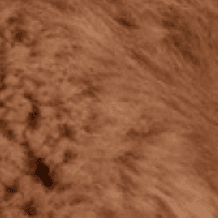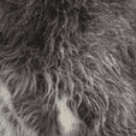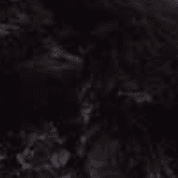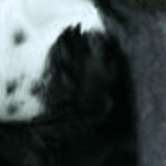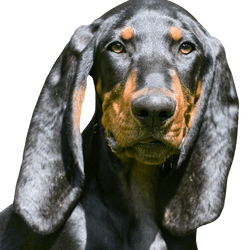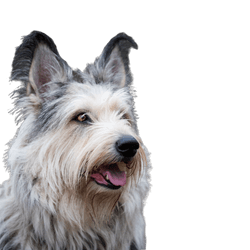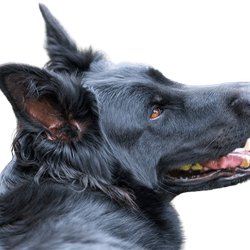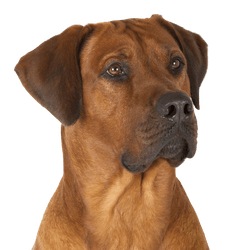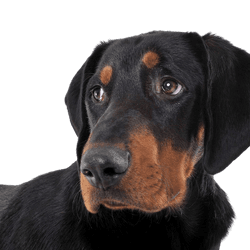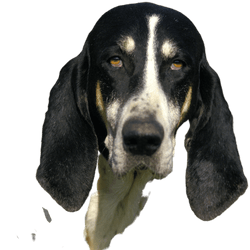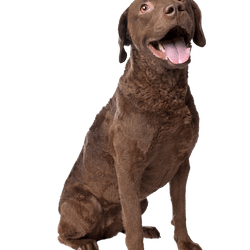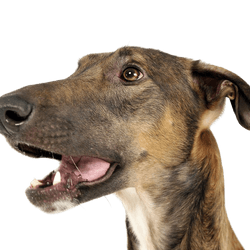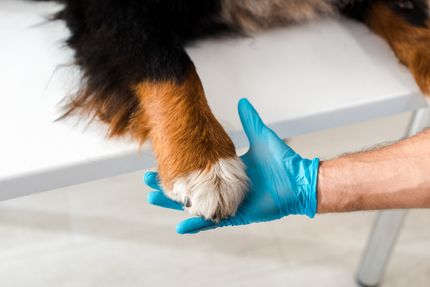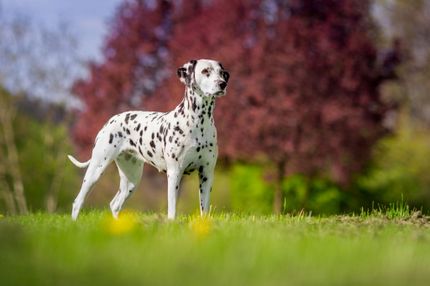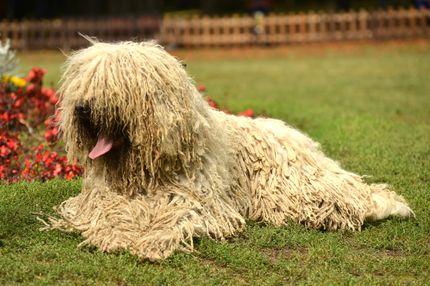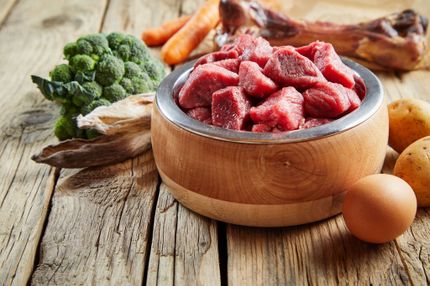Facts & Origin
Origin and history of the Newfoundland
The Newfoundland, whose origin is described by the FCI as Canadian, is said to have evolved from a combination of dogs native to the island of Newfoundland and possibly the large black bear dog introduced there by Vikings in the 1100's. They needed a hard-working dog that was both water-loving and a draft animal. Later, further mixing with the dogs brought by the European settlers led to the development of his blocky head and floppy ears.
"What the St. Bernard is to the Alps, the Newfoundland is to the icy waters of the North Atlantic". However, Newfoundlanders also earned their living by pulling fishing nets ashore and taking the day's catch to market. Although the Newfoundland's career as a deckhand at sea is largely a thing of the past, the breed is still considered a first-class water rescue dog and is used in this capacity all over the world.
The dog breed was first mentioned in the 18th century in the diary of British Captain Cartwright. As a result, the Newfoundland became known as a powerful working and rescue dog. The English and French middle and upper classes gladly acquired this dog breed from the New World and stories spread about heroic Newfoundlanders saving lives at sea. In 1860, the Newfoundland first appeared at a dog show in Birmingham, and 15 years later, the English Kennel Club began keeping a studbook for Newfoundlands.
Husbandry and suitability
In the breed standard, this dog breed is described as a sled dog for heavy loads and a water dog. It is often used as a water rescue, guard and also normal companion dog.
However, due to its pronounced calmness, its working urge should not be underestimated: His family should definitely be active enough to take him for long and extensive walks.
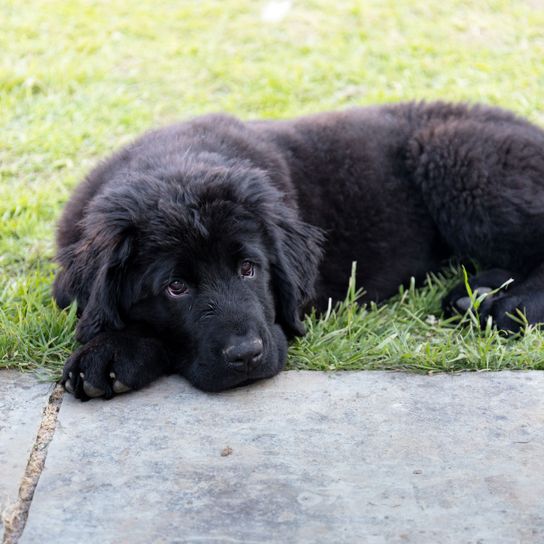
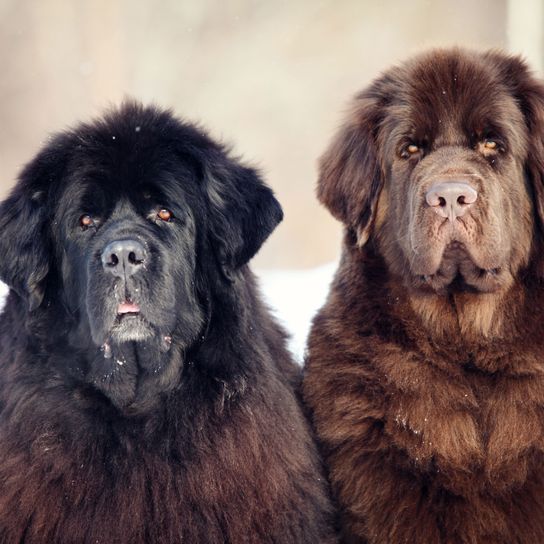
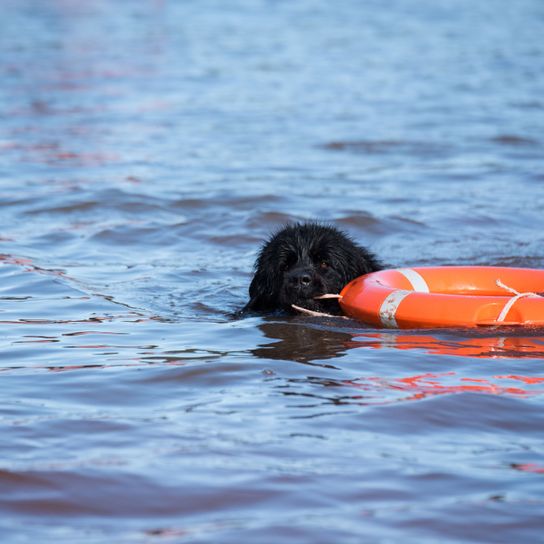
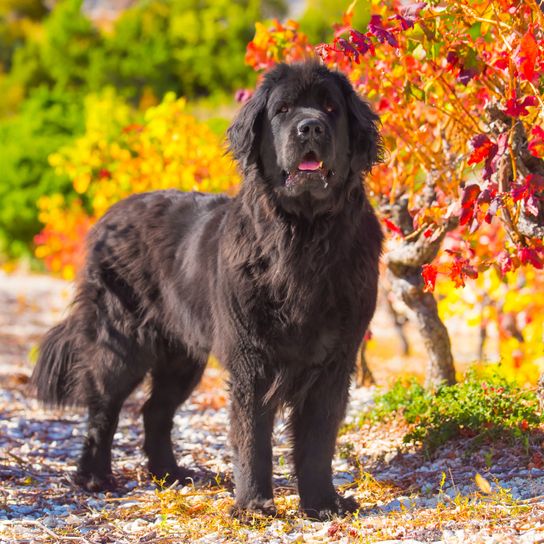
| Alternate Name | Newfoundland |
| Origin | Canada |
| Life expectancy | 8 - 10 years |
| Care requirements | high-maintenance |
| Activity level | average |
| FCI group | Molossian type |
| AKC group | Herding Group |
| KC group | Pastoral Group |
Newfoundland mixes
Attitude, character and temperament of the breed
Typical character traits of the Newfoundland
The Newfoundland is calm, affectionate and fond of children. When dealing with small children, he keeps his size and strength in check and shows quite a high tolerance level. He always appears benevolent and mild, giving a majestic appearance. However, this does not mean that he is lethargic: cheerful as well as enterprising, he wants to be extensively occupied in nature.
This dog breed is also very friendly towards strangers, so it is unsuitable as a guard dog, because it rarely barks as a rule. However, this does not mean that he would not defend the family in case of danger.
Education of a Newfoundland
Newfoundland puppies need a loving but consistent upbringing. At times, the dog can have a mind of its own and be quite stubborn. You can rely on his intelligence when raising him, but he does not always do what is asked of him. Newfoundlands can be too friendly towards friends and strangers and sometimes forget their size during greetings - consistent training should stop this behavior such as jumping up.
Character
Usage
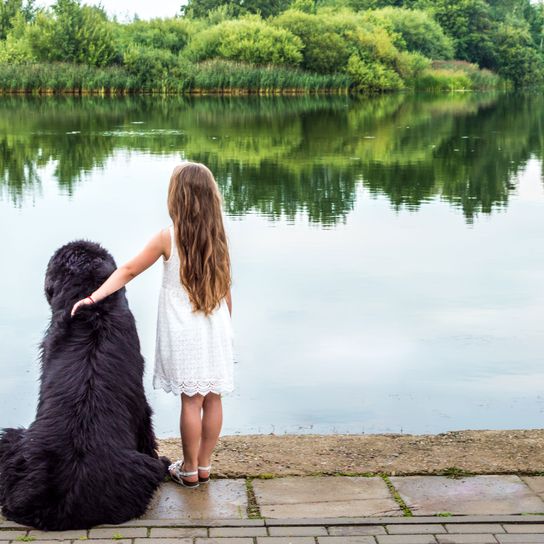
Typical diseases of the Newfoundland breed
Newfoundlands unfortunately have below average health and are prone to a variety of orthopedic hereditary diseases and dispositions. Among them are:
- Cruciate ligament rupture
- Taurine deficiency
- Cystinuria
- Mitral and subaortic stenosis
- Myasthenia gravis
- Primary ciliary dyskinesia
Due to its size, it is also prone to dilated cardiomyopathy (possibly triggered by taurine deficiency), hip dysplasia (HD) as well as elbow dysplasia (ED) and bone cancer. Furthermore, a gray Newfoundland can have Blue Dog Syndrome, as this coloring is controlled by the Dilute gene.
It is also important for the owner to pay attention to the temperature: These animals do particularly poorly with high heat.
Life expectancy
The Newfoundland unfortunately does not have a pronounced life expectancy like many other large dog breeds. More than half do not live to be 10 years old.
Breeding and buying a Newfoundlander
You should therefore make sure that your Newfoundland comes from a certified breeder. This way you support a healthy breeding also for the future and you can have a long-lasting partner at your side.
When buying a puppy, you should expect a price between 1400 and 2000 euros.

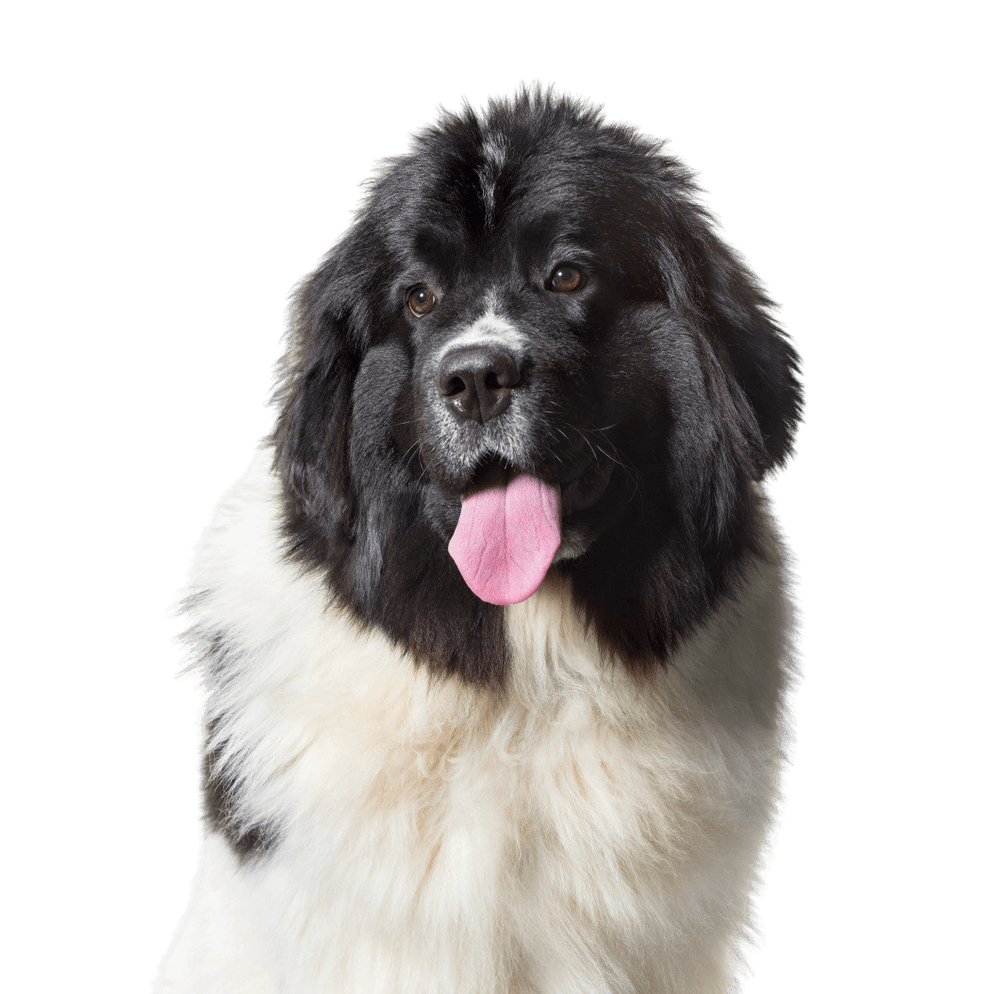
Breed characteristics of the Newfoundland dog
The cynological umbrella organization FCI lists the Newfoundland under group 2 (Pinscher and Schnauzer, Molossoid, Swiss Mountain Dogs), section "Molossoid" and in the subgroup "Mountain Dogs". No working test is required.
Adult males have an average height at withers of 71 cm and a weight of about 68 kg, adult females and about 54 kg. A great height at the withers is desirable, but size is not to be preferred to symmetry, general health, strong constitution and perfect movement.
Gait
In the Newfoundland, the gait shows good foreleg drive and strong hindquarters thrust, giving the impression of effortlessness and power. A slight roll of the back is natural. As speed increases, the legs show a tendency to approach the central line of the body's center of gravity, while the back line remains horizontal.
The head
Very typical of this breed is a massive head, but sexually it may be slightly less massive in females. The broad skull has a slightly domed crown and a strongly developed occiput. The stop is clearly pronounced, but not abrupt.
The muzzle
Newfoundlands have a large, well pigmented nose with well developed nostrils. In terms of color, in breed specimens it is either black with a (white) black coat or brown with a brown coat. The muzzle itself is distinctly square and deeply covered with short fine hair. Wrinkles should not be seen, but the corners of the mouth should be relatively well defined.
Scissor or pincer bite may be present in this breed.
Eyes & Ears
The relatively small eyes are set wide apart and no red conjunctiva should be visible. The color is either dark brown with black (white) or slightly lighter with brown coat.
The ears, set on the back/side of the skull, are also relatively small and triangular in shape with a rounded tip. When the ear is placed forward in the adult dog, it reaches the inner corner of the eye on the same side.
The trunk
Newfoundlands have a strong, muscular neck, which on the one hand should rest well on the shoulders and on the other hand should be long enough to allow a dignified posture of the head. An overdeveloped dewlap is undesirable in breed specimens.
In general, his bone structure should be solid all over, showing some depth and strength when viewed from the side. The upper profile line from withers to croup is horizontal and firm, passing over a broad back and strong, well-muscled loins and equally broad croup sloping at an angle of about 30°. A broad, capacious and deep chest with well rounded ribcage are characteristic.
The lower profile line and the belly are never tucked up'and therefore lies in an almost horizontal line.
The tail
When the Newfoundland swims, the tail acts as a rudder; hence it is strong and broad at its base. When standing, it hangs straight down, at most with a small curve at the end. It reaches to the hock or slightly below. In motion or when the dog is excited, it is carried straight and level with, at the tip, a slight bend upward.
The limbs
The forelegs of this breed of dog are straight and parallel, even at the walk and slow trot. At the same time, the shoulder is very well muscled and well sloping backward, and the elbow is well resting against the chest. A slightly sloping pastern is also typical.
As the thrust for pulling heavy loads, for swimming and for a powerful, ground-covering stride depends to a great extent on the hindquarters, the condition of the hindquarters in the Newfoundland is of the utmost importance: the pelvis should be strong, broad and long and the thigh equally broad and muscular. The stifle joint is well angulated, but not so much so that the dog looks crouched. The strong, rather long lower leg leads into a relatively short, low-set hind pastern, which should be parallel on both sides and set wide apart.
The forefeet are described as large and harmonious with the body, with well rounded, tight, firm and compact toes. In addition, the typical inter-toe skin is present. The hind feet, on the other hand, are said to be strong and compact. If present, the breed standard specifies the removal of the wolf claws.
The coat
The Newfoundland has a waterproof stock coat. The top coat is moderately long and straight, not curly - however, a slight wave is permitted. The undercoat is soft and always dense, especially in winter. On the head, muzzle and ears the hair is short and fine. The fore and hind legs are feathered. The tail is completely covered by long, dense hair, which should not form a plume. Trimming and shearing is not recommended for breed specimens.
Color-wise, this dog breed comes in black (its conventional color), white-black (historically significant; minimal mottling is allowed, preferred is this color with a black head, croup, saddle, and top of tail, as well as a white blaze and even markings), and brown (from chocolate to bronze). The shade should be as uniform as possible, but a slight shimmer ("as from sunburn") is permissible. White markings on the chest, toes and/or tip of tail are permitted in breeding.
| Fur length | long |
| Fur | - |
| Ear shape | Triangle |
| Tail | fanned out |
| Anatomy | massive, hefty |
| Size ♀ | 63 - 69 cm |
| Weight ♀ | 45 - 55 kg |
| Size ♂ | 69 - 74 cm |
| Weight ♂ | 60 - 70 kg |
| Suitable For | Children |
Colors



Known Diseases
Hip dysplasia (HD)
Hip dysplasia (HD) is a genetic condition in dogs where the hip joint is not shaped properly. This leads to pain, stiffness and restricted movement.
Gastric torsion
Gastric torsion is a disease in which the stomach rotates around its own longitudinal axis. The cause of the disease is not known.
Kidney disease
Symptoms of kidney disease in dogs: increased urination (polyuria) increased water intake. Inflammation of the mucous membrane of the mouth. Loss of appetite
Eye diseases
Often occur with allergies and intolerances.
Skin inflammations
Can be hereditary in certain breeds.
Vein diseases
Most venous diseases are of minor importance in the dog
FAQ
-
Newfoundlands are considered a trainable breed.
-
On average, a Newfoundland needs a lot of exercise. He feels very comfortable when he has a large garden for romping and sleeping.
-
The Newfoundland is an ideal family dog and loves people and children.
-
Newfoundlands are one of the largest dog breeds and originate from Germany. They have long fur and floppy ears.
-
Newfoundlands were originally used as water dogs and were helpful in fishing and rescue work in Newfoundland. Today they are often used as family dogs or for therapy and assistance tasks.
-
Newfoundlands are friendly, loving and intelligent pets that get along well with children and other pets. However, they are also strong and active and need a lot of exercise and training.
-
The Newfoundland originated in Newfoundland and Labrador, Canada, and was used for fishing and rescue work. In the 19th century, some specimens were brought to England and began to serve as family dogs.
-
The average life expectancy of a Newfoundland is 8-10 years.
-
The price of buying a Newfoundland depends on several factors, such as the origin of the puppy, the quality of the breeding and the geographical location. As a rule, you should expect about 1500€.
Later the running costs are to be considered!







